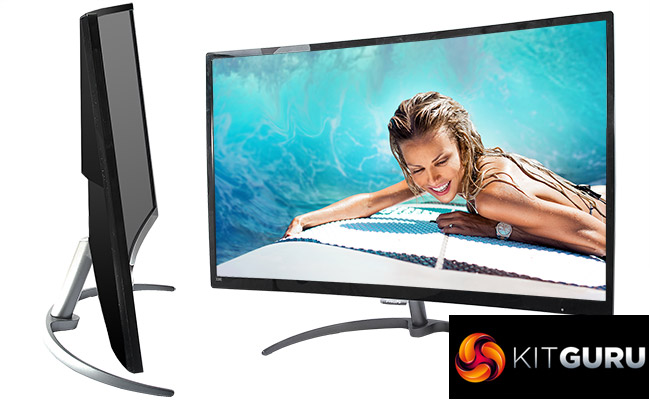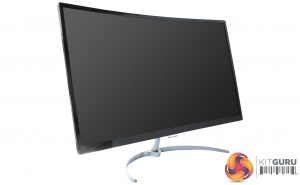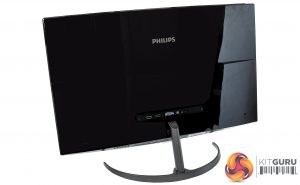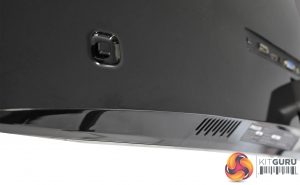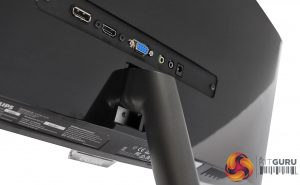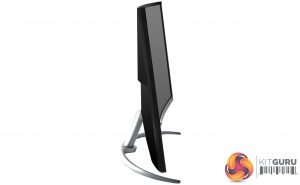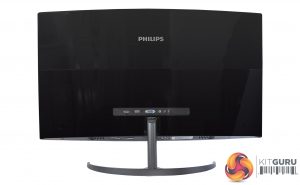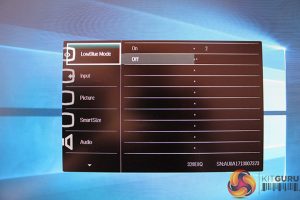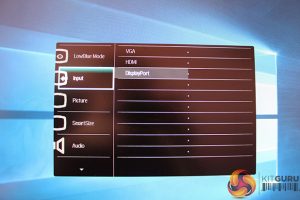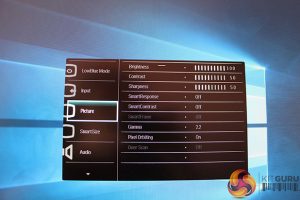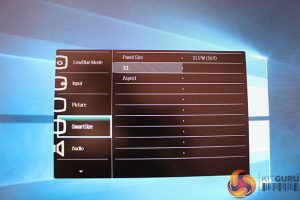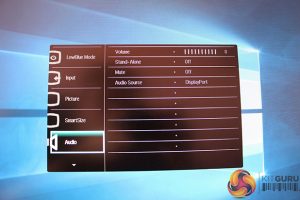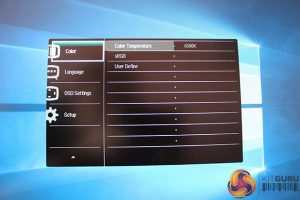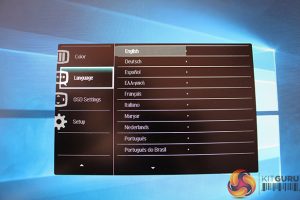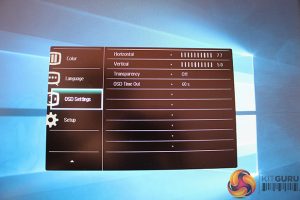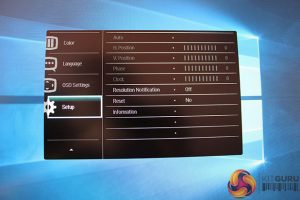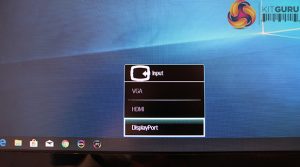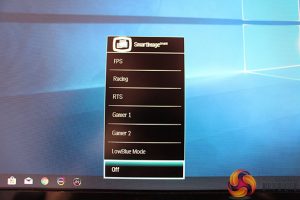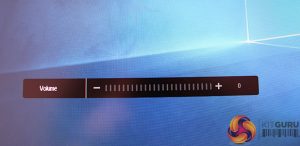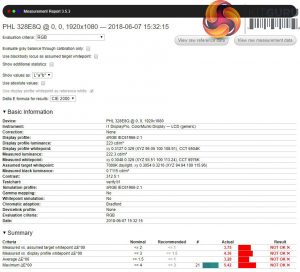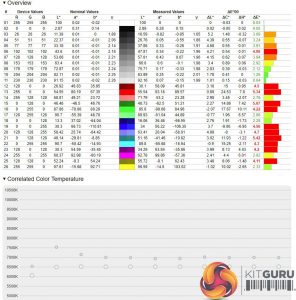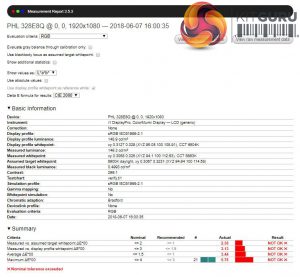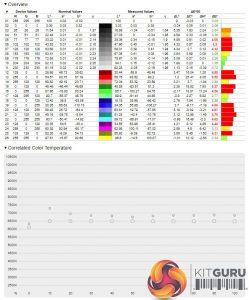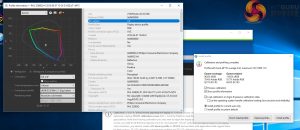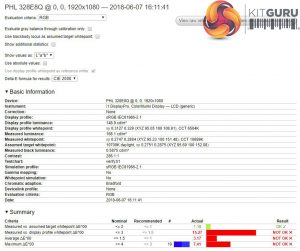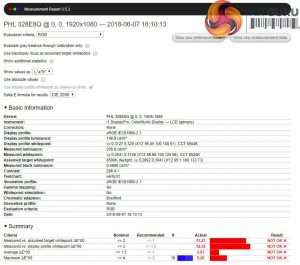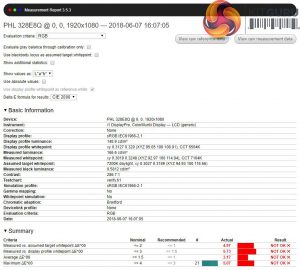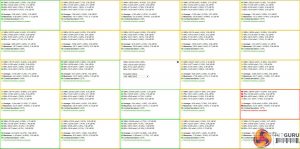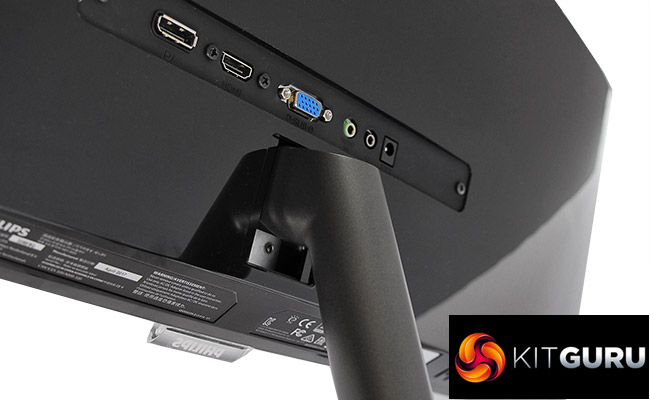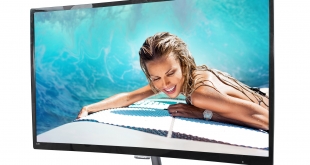
The Philips 328E8QJAB5 is a monitor that serves up a tempting design for a surprising price. The £230 cost undercuts most of its rivals – and, for that money, you still get a 31.5in curved panel with AMD FreeSync.
It’s a lot of monitor for a little cash, though, so we’re a little worried that Philips has cut too many corners to deliver the cheapest curved monitor we’ve seen for some time.
Specifications:
- Screen size: 31.5in
- Native resolution: 1,920 x 1,080
- Bit colour depth: 8-bit
- Refresh rate: 60Hz
- Panel type: VA
- Contrast ratio (typical): 3000:1
- Brightness (cd/m2): 250
- Response time (ms): 5ms
- Display inputs: HDMI, DisplayPort, D-SUB
- Audio inputs: PC audio in, headphone out
- Speakers: 2 x 3W
- USB hub: no
- Tilt: yes
- Height: no
- Swivel: no
- Pivot: no
- VESA mount: no
- Power (plug type, internal/external): Clover, External
- Cables provided: Audio, power, HDMI, D-SUB
- Depth on desk: 223mm
- Weight: 7.2kg
Price (retail): £230
The Philips 328E8QJAB5 might be affordable, but it certainly looks good. The screen is surrounded by a glossy bezel that isn’t wide enough to be intrusive, and the panel sits on a curved stand finished with a dark metallic sheen.
The stand is slim and smart, which means it’s easier to position this screen on a desk – and also easier to fit your peripherals around the thin metal. And, impressively, the Philips offers solid build quality despite the slimline stand – there’s very little hint of any movement or wobbling once this screen has been placed on the desk.
The svelte stand supports one of the cheapest curved screens we’ve reviewed. The Philips has a 31.5in diagonal with a conventional 1800R curve – the same curve and size as the £470 AOC AGON AG322QCX. The 31.5in diagonal also matches the AOC Q3279VWF, which costs just £200, and Philips’ own £392 Brilliance 328P6AUBREB.
Philips reckons that the curve will help in all sorts of scenarios, from immersion in gaming to making it easier to work in the corners of the screen if you’re in the middle of some intense multi-tasking.
The panel uses VA technology, which means it should deliver good contrast and black levels – on paper, at least. It’s the same technology used by the AOC Q3279VWF and the curved AOC screen. However, the other Philips panel, the Brilliance 328P6AUBREB, uses IPS technology that should deliver better colour accuracy.
This affordable Philips screen adds to its gaming attributes with AMD FreeSync. That’s a welcome addition that’ll help smooth out gameplay, but it does come with a couple of caveats.
For starters, you can only properly sync your gameplay to the screen’s refresh rate if you’re using an AMD graphics card. If you’re one of the majority who uses Nvidia, you can still run the screen at its top refresh rate – but it won’t be synced to your GPU’s output. That means you’ll still run the risk of screen tearing, especially on higher-end games.
And then there’s the refresh rate itself. The Philips peaks at 75Hz, which is relatively low for a gaming screen – spend a little bit more and you’ll be able to buy a panel that offers smooth gaming at beyond 100Hz.
The quoted 5ms response time is fine but, again, keen gamers will want to look for a pricier panel that offers a speedier response – especially if you play high-octane esports titles.
The 1,920 x 1,080 resolution is more evidence of this panel’s lesser budget. The resolution is fine for work and gaming, but it’s certainly at the lower end of what we expect from a modern monitor. The 70ppi is modest and that means the screen isn’t particularly sharp – you don’t even have to look closely to see pixels. Every rival that we’ve mentioned in this review will be crisper because they’re all 2,560 x 1,440 products.
The Philips screen is an 8-bit panel, which makes perfect sense at this price – you’d have to spend a lot more to get the 1.07 billion colours of true 10-bit technology, and the 16.7 million colours provided by 8-bit is ample for this panel’s various uses.
The Philips’ 1080p resolution, low-end Freesync and VA technology are exactly what we expect from a screen that undercuts its competitors when it comes to price – and it looks like the budget has bitten when it comes to ergonomic and connectivity, too.
The Philips 328E8QJAB5 has 15° of front-to-back tilting, which is a relatively low amount of movement – most panels have 25° of tilt or more. And, when it comes to adjustment, that’s it – you don’t get any swivel or height adjustment. The screen also doesn’t support VESA mounting.
The Philips has HDMI, DisplayPort and D-SUB inputs, but there’s another sign of cost-cutting – there’s no DisplayPort cable included. And, sadly, the screen doesn’t have a USB port, or USB-C.
The Philips’ 7.2kg weight isn’t bad for a large, curved screen, and its stand will occupy around 235mm of front-to-back space on your desk.
And then, finally, there are the speakers. The pair of 3W units have relatively modest volume, but they have reasonable quality – the mid-range is clear and punchy without proving too tinny, and there’s no distortion at peak volume. Headsets or proper speakers will always be better, but these are serviceable.
The on-screen display follows a familiar Philips blueprint. That means you get a system that’s easy to navigate – but not an OSD that looks particularly smart.
The OSD is managed using a small joystick that sits behind the bottom-right corner of the screen. It’s a little flimsy, but it’s light and easy to use.
Tapping the joystick to the right opens the main menu. The first menu has an easily accessible option for the low blue light mode, while the second allows for switching between display inputs.
The third menu has meatier options. This screen has options to tweak the brightness, contrast and sharpness, along with settings for dynamic contrast and gamma adjustment. After that you’ve got the SmartSize screen, which allows for panel size and aspect ratio tweaks.
The audio menu has basic options for volume, source and muting, and the colour menu allows users to choose their colour temperature or customise the screen’s RGB levels.
Finally, you get language options, a menu to alter the time-out length and position of the OSD, and the setup menu, which lets users reset the screen and access other options.
Tapping the joystick to the right may open up the main menu but moving it in other directions unveils a handful of accessible options.
Pressing the joystick upwards allows for quick input switching, and pressing it down loads a volume menu. Tapping to the left reveals a menu for switching between screen modes.
The Philips menu is fine, even if it does have a couple of foibles that you’ll need to get used to. For instance, adjusting the Philips’ horizontal sliding scales requires you to move the joystick up and down – a disarming navigational quirk.
Our main test involves using an X-Rite i1 Display Pro to assess a display’s image quality. The device sits on top of the screen while the DisplayCAL software generates colour tones and patterns – which it then compares against predetermined values to discover the screen’s accuracy.
These results show:
- A monitor’s maximum brightness in candelas or cd/m2 at various levels set in the OSD.
- A monitor’s contrast ratio at various brightness levels in the OSD.
- The brightness deviation across the panel.
- The black and white points
- The colour accuracy, expressed as a Delta E ratio, with a result under 3 being fine for normal use, and under 2 being great for colour-accurate design work.
- The exact gamma levels, with a comparison against preset settings in the OSD.
We’ve compared the Philips 328E8QJAB5 to three rival screens in various price points.
The Philips Brilliance 328P6AUBREB is a 31.5in 1440p IPS panel that isn’t curved – but it does have a higher price of £391.
The AOC AGON AG322QCX is a 31.5in curved gaming monitor with AMD FreeSync that cost a mighty £470 at launch but can now be found easily for under £400.
The AOC Q3279VWF is a flat 31.5in VA panel with AMD FreeSync that was £200 at release and now costs a little less.
The Philips delivers reasonable levels of quality straight out of the box, but this affordable panel struggles to provide good results in any single department.
Take contrast, for instance – one of the most important tests for any monitor, and here the Philips proved disappointing.
Its brightness level of 223cd/m2 is too low, for starters, and that means that this screen could be tricky to see under particularly bright office lights. The low brightness level combines with the black measurement of 0.71cd/m2. That’s far too high, and it means a disappointing contrast ratio of 314:1.
That’s about a third of what Philips claims for this screen, and it has a negative impact on gaming, movies and work. The low contrast figure means that the screen isn’t good at picking out subtle differences in colour, and the high black level creates black tones that look more like a dull grey. And, on this screen, the difference is starkly obvious when compared with better, more expensive panels that deliver inkier black shades and better differences at all other parts of the spectrum.
The AOC AGON panel dropped to 540:1 in some screen modes, but it hit 1,080:1 with its normal settings – and the other AOC panel was even better despite its lower price. The Philips Brilliance screen returned a contrast level of 850:1 – not great, but still better than the curved Philips monitor.
The Philips’ poor contrast result is further hindered by underwhelming colour figures. The default colour temperature of 6,976K is a little too cool when compared to the ideal figure of 6,500K. The average Delta E of 3.28 is wayward, too – anything below 3 is a good figure for day-to-day use, but the Philips is just short.
Dropping the brightness to a more manageable 150cd/m2 didn’t improve matters. With this option selected the contrast ratio hovered at 306:1, and the Delta E sat at 3.44.
The Philips’ sRGB gamut coverage level of 96.8% is fine. However, again, that’s another area where the competition is better. The nearest challenger, the AOC Q3279VWF, hit 97% – with the Philips’ other two rivals managing 100%.
Out of the box, then, the Philips is underwhelming – but not surprising. This cheap, curved screen delivers disappointing contrast that manifests itself with black tones that aren’t deep enough and a range of colours that isn’t wide enough. Colour accuracy is a little chilly, too.
The Philips is still adequate for gaming and for watching movies and TV shows, especially if you’re not overly fussed about getting great image quality. It’ll also cope with basic office tasks and web browsing. However, in building a 31.5in curved screen for this price, Philips has certainly opted for size and impact over image quality.
The Philips’ various game-friendly screen options aren’t very good. The FPS mode ramped up the colour temperature to 10,689K, which made the panel looked pallid and washed-out. The Racing option delivered a poor colour temperature of 8,526K, and the RTS option took the factory contrast and colour settings and made them marginally worse. None of the different screen modes saw the Philips’ contrast rise beyond 300:1.
The Philips panel also proved middling in the uniformity test. The screen lost around 10% of its backlight strength around most of its edges, with one sector on the right-hand side losing just over 14% of its potency. It’s a mediocre result across the board, even if most people won’t notice the discrepancy – and it’s not helped by obvious backlight bleed from all four edges of this screen.
The Philips 328E8QJAB5 aims to deliver a curved entertainment experience for a surprisingly low price, but hands-on time with this screen reveals that serious compromises have been made to bring this monitor to market for £230.
The Philips has a tempting curved display, a welcoming 31.5in diagonal and solid design that features a smart stand and impressive build quality.
Get beyond the superficial, though, and you’ll find a screen that’s hindered by compromises.
The only adjustment option is screen tilting, for instance, and the only syncing option is AMD FreeSync at a low 75Hz peak – so most gamers won’t be able to use it properly.
Screen quality is lacking, too. Contrast is low, the black points are far too high, and colour accuracy is only average. Uniformity is middling, and there’s obvious backlight bleed too.
The lacklustre screen quality means that the Philips is only suitable for gaming and movie watching if you’re not fussed about colour quality, and it’s only suited to basic work tasks – it’s no good for photo editing or video work, for instance.
If you are bothered about getting the best experience with gaming, movies or work, then one of the Philips’ more expensive rivals is a better option – even if you have to forego the curved screen to get better image quality. As it stands, the Philips 328E8QJAB5 is only a worthwhile buy if you’re dead-set on buying a large, curved panel on a very tight budget.
The model we’ve reviewed here is available from Box for £230.
Discuss on our Facebook page, over HERE.
Pros:
- Very cheap.
- Solid build quality.
- Large, curved panel.
Cons:
- Underwhelming contrast.
- Mediocre colour accuracy.
- Few adjustment options.
- Poor screen modes.
KitGuru Says: the Philips 328E8QJAB5 wins points because of its low price, but this 31.5in curved screen makes serious compromises to achieve its budget position in the market. It’s serviceable for basic tasks, but the poor contrast and mediocre colour accuracy means it can’t cope with anything more.
 KitGuru KitGuru.net – Tech News | Hardware News | Hardware Reviews | IOS | Mobile | Gaming | Graphics Cards
KitGuru KitGuru.net – Tech News | Hardware News | Hardware Reviews | IOS | Mobile | Gaming | Graphics Cards


